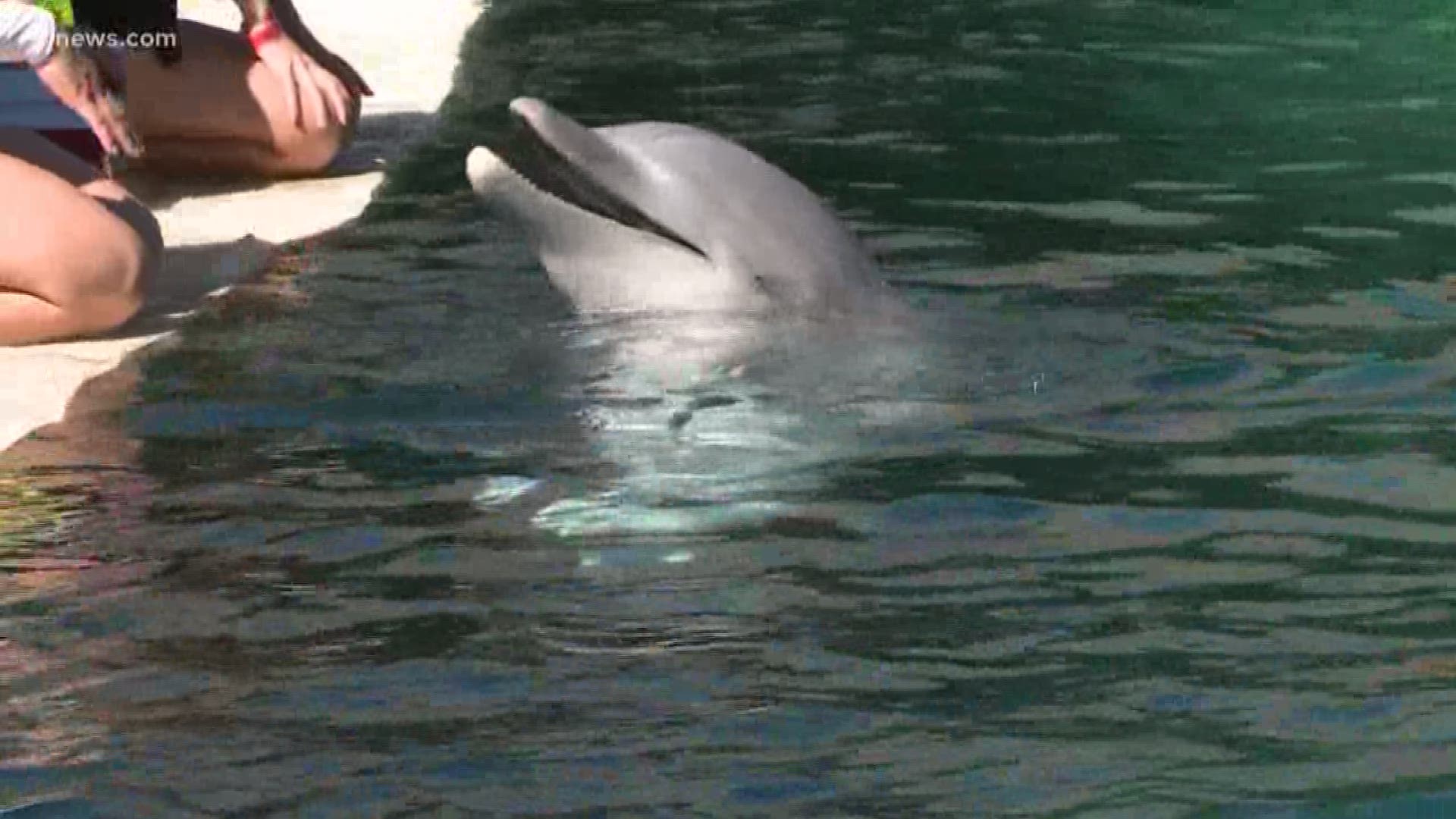PHOENIX —
The deaths of four dolphins in 16 months at a Valley aquatic facility have prompted federal authorities to review the situation and a national animal welfare group to raise concerns that Valley fever may have caused at least one dolphin's death.
Dolphinaris Arizona revealed Thursday night that a 22-year-old Atlantic bottlenose dolphin named Kai was euthanized after his health had declined for two weeks.
Just four dolphins remain from the eight at Dolphinaris Arizona when it opened a little more than two years ago on tribal land next to Scottsdale.
The privately owned facility imports dolphins to the desert to swim and play with paying customers.
"We recognize losing four dolphins over the last year and a half is abnormal," Dolphinaris General Manager Christian Schaeffer said in a prepared statement.
The company says it's bringing in outside experts to investigate all four dolphin deaths.
That came after the Animal Welfare Institute urged the Animal and Plant Health Inspection Service, whose mission includes animal welfare, to conduct an immediate inspection and remove the remaining four dolphins.
According to statement released to the Arizona Republic, the Animal and Plant Health Inspection Service of the U.S. Department of Agriculture says it is “working on the next course of action.”
In a letter to APHIS, Dr. Naomi Rose, a marine mammal biologist for the AWI, raised concerns about the risks to dolphins posed by Valley fever and other disease-carrying microorganisms in the desert.
Rose suggested the death of one of the dolphins, Bodie, in September 2017, might be linked to Valley fever:
“Dolphinaris reported to APHIS that Bodie’s cause of death was a fungal infection, but the facility’s public claim was that he had a ‘rare muscle disease.' ... With each subsequent death, the onus has shifted more firmly to Dolphinaris—and, indeed, to APHIS—to demonstrate that airborne fungal or other pathogens or deficiencies in Dolphinaris’ life support systems do not pose a risk to the surviving dolphins and/or that no other inherent characteristic of Dolphinaris and its location is a threat to the animals.”
Lincoln O'Barry, of the Dolphin Project, a harsh critic of Dolphinaris, said the facility should be shut down.
“This is the highest mortality rate I've ever heard of any facility,” O'Barry told 12 News. “There's an emergency going on there. There needs to be a full stop of all activity.”
O'Barry is paying for a plane carrying a banner in North Scottsdale challenging Dolphinaris: "Why are 4 dolphins dead?"
The plane began flying Thursday over the Waste Management Phoenix Open, but the sign noted just three deaths. That was changed Friday after Kai's death.
The first dolphin death was 7-year-old Bodie, then 10-year-old Alia died in May 2018. Now, two dolphins have died 32 days apart -- 11-year-old Khloe at the end of December, and 22-year-old Kai on Thursday.
“What we've seen is this is an experiment and it's a failed experiment,” O’Barry said. “There is no justification for what's going on here.”
Dolphinaris spokeswoman Jen Smith said the facility and employees had received death threats in emails, on the phone and on social media.
She said the Salt River Pima-Maricopa Indian Community police were investigating. A police spokesman didn’t respond to a request for confirmation.
Dolphinaris can remain on its regular operating schedule with its four surviving dolphins, Smith said.

